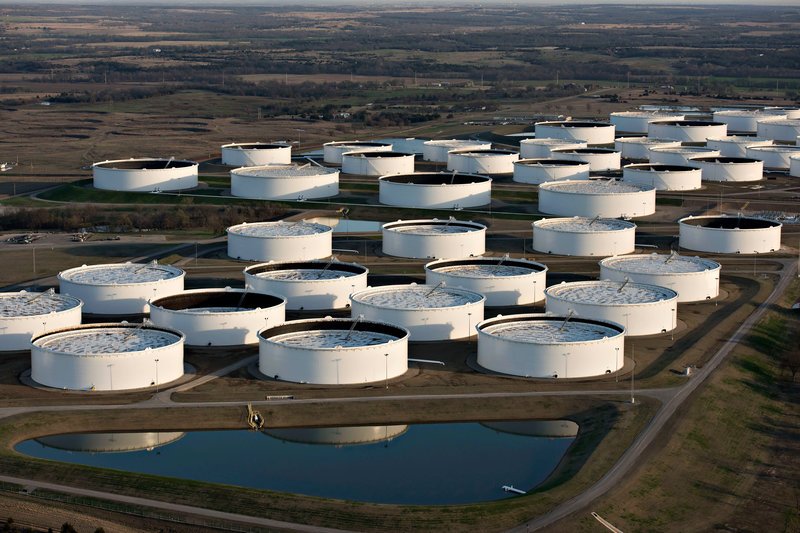
- ARAB NEWS
- 01 Jul 2025

The West Texas intermediate (WTI), also known as the Texas light sweet, fell to historic lows since markets opened in Asia. By mid-afternoon, WTI had fallen by 39.52 percent to $11.05 per barrel. Brent had fallen by 6.8 percent to $26.17 during the same time period.
This differential can be explained by the fact that in North America storage is filling up fast. Some shale producers offer a physical barrel at the rock-bottom price of $2; paying off-takers for a barrel they purchase may become reality. Brent is more fungible and can be used by countries such as China, India and Korea to fill up their strategic reserves at ultra-low prices. However, those storage facilities will fill up soon too.
The fact that the May contracts trade substantially lower than later durations is indicative of the current storage crisis and the expectation that the situation will relax once the OPEC+ deal with G20 countries, which is expected to take out a combined 15 million barrels per day (bpd), comes into force on May 1. The OPEC+ part of the deal constitutes the only real production cuts. The G20 part is achieved by natural attrition due to falling demand.
Last week, the International Energy Agency (IEA) published a chilling demand outlook in its April report. Oil demand will go down by 9.3 million bpd for the year, 29 million bpd in April, 26 million bpd in May and 15 million bpd in June.
The OPEC+ production cuts will clearly not be sufficient to balance the market in the face of such historic demand destruction. What they will do, however, is flatten the curve and allow storage to build more gradually, notwithstanding the fact that the world is running out of storage capacity nonetheless.
There are a few mitigating factors. The IEA points out in its report that the OPEC+ cuts are in reality more in the magnitude of 10.7 million bpd than 9.7 million bpd because of the timelines and baselines from which they were calculated.
The agency also predicts that output in the US and Canada will fall by 3.5 million bpd at current low-price levels.
The Trump administration is working on plans to support its oil industry, considering even paying companies to leave barrels in the ground. This is important for two reasons. Firstly, we need to give the shale industry a way to come back once the crisis is over. Secondly, shale producers have a relatively high cost base, many of them also high leverage. Allowing too many bankruptcies in this space would have a devastating effect on some of their lenders.
Goldman Sachs released its price forecasts, which ranged between $33 and $45.55 per barrel from the second to the fourth quarter. They admitted to an upside risk if the recovery was steep and cash-strapped producers struggled to ramp up production as well as bringing back shut-in fields.
This tallies with the views of the IEA, which does not forecast prices but estimates that we could see a demand overhang in the second half of 2020, pointing out that this would lead to a welcome reduction in stocks.
What happened overnight in Asia was yet another sign of just how tense the situation has become in the oil markets. The IEA’s Executive Director, Fatih Birol, pointed out that demand destruction in 2020 will erase 10 years' worth of global demand growth in one go.
What happened overnight in Asia was yet another sign of just how tense the situation has become in the oil markets.
Cornelia Meyer
We should not lose sight of the fact that, depending on the shape and speed of the recovery, we might see higher oil prices in future years, which would give an inflationary impetus to any recovery.
Most international oil companies have slashed capital expenditure (capex). Even Gulf Cooperation Council oil companies are reviewing their capex programs. In all previous downturns, these national oil companies were the stalwarts maintaining capex when everyone else cut. Some independents, especially if they are highly levered high-cost producers, may never come back. Oil is a long-cycle business, and a dollar invested today will produce a barrel anywhere between 18 months and 10 years, depending on geography and production methodology. This means that we shall only then see the full impact and degree of the damage inflicted on the sector by the pandemic.
Cornelia Meyer is a business consultant, macro-economist and energy expert. Twitter: @MeyerResources